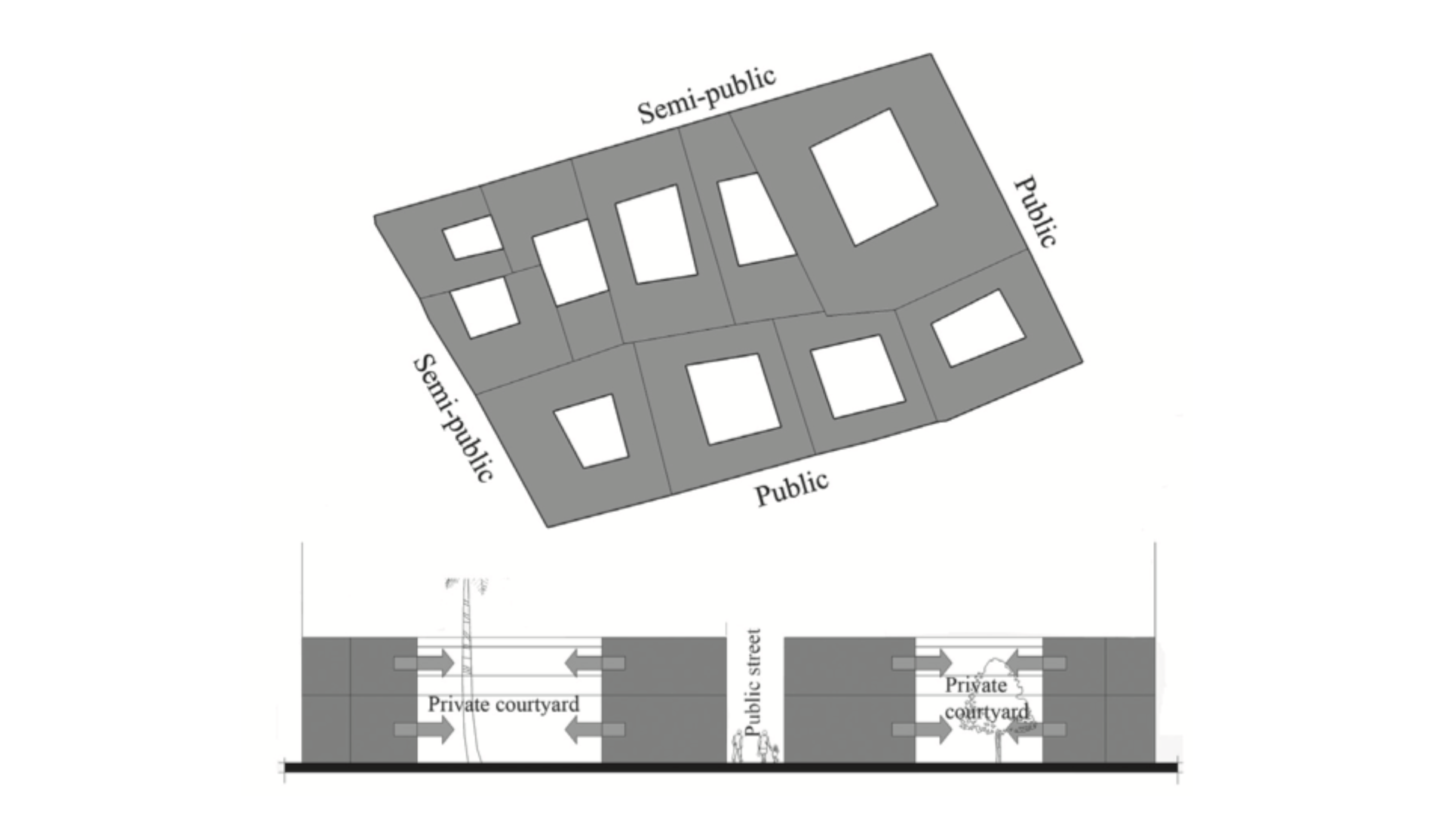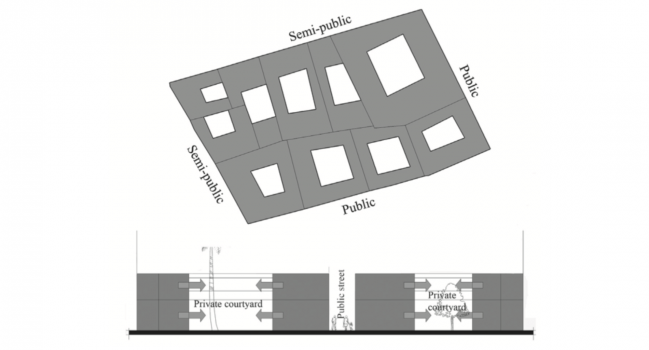 Remali, AM & Porta, S 2017, ‘Correlating street network and urban blocks in the city centre of Tripoli‘ Urban Morphology (2017) 21(2) pp. 161-179.
Remali, AM & Porta, S 2017, ‘Correlating street network and urban blocks in the city centre of Tripoli‘ Urban Morphology (2017) 21(2) pp. 161-179.
The study analyses the urban form of central Tripoli, Libya, comparing three cases of different morphological periods: Old Town (pre-modern), Italian Quarter (colonial) and Garden City (early-modern). Two sets of descriptive indices, which relate to street network and the block structure, are applied to quantitatively measure the urban fabric of the three selected cases, and explore their distinct characters as well as common traits. Findings show that the Old Town combines good privacy at the very local level, due to the large amount of cul-de-sacs in the service street network, with high interconnectedness both within the case and between it and its immediate surroundings. This appears to be correlated to the Old Town’s high street density. Moreover, we suggest that despite visible dissimilarities at the service street and plot level, the Old Town and the Italian Quarter share the same main structure, which the Garden City does not: in that sense, the Garden City is found to represent a major departure from the morphological norms historically established since the dawn of the pre-modern age, and arguably since the ancient Roman domination.


